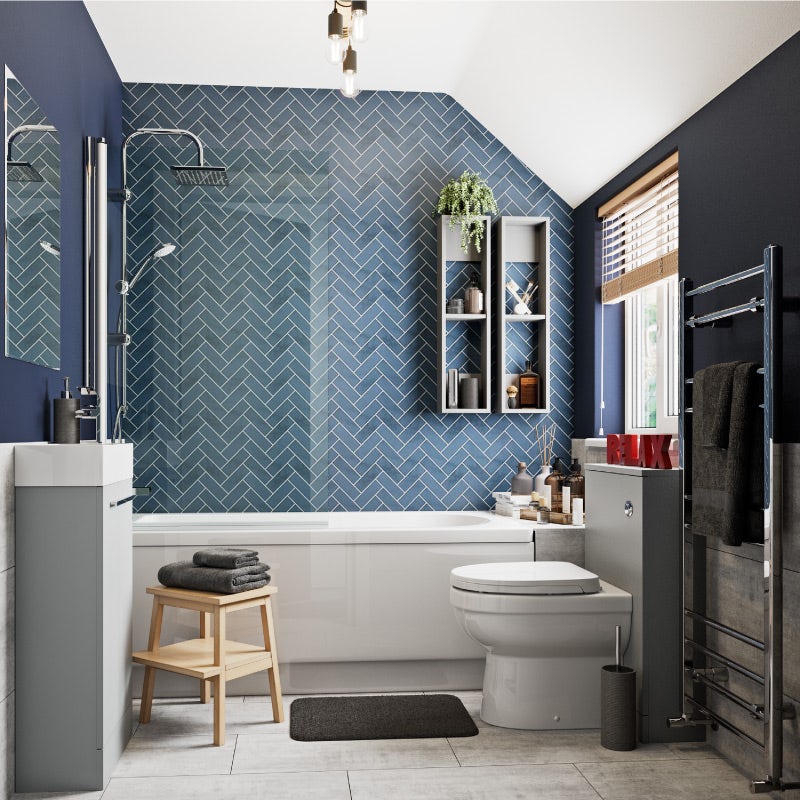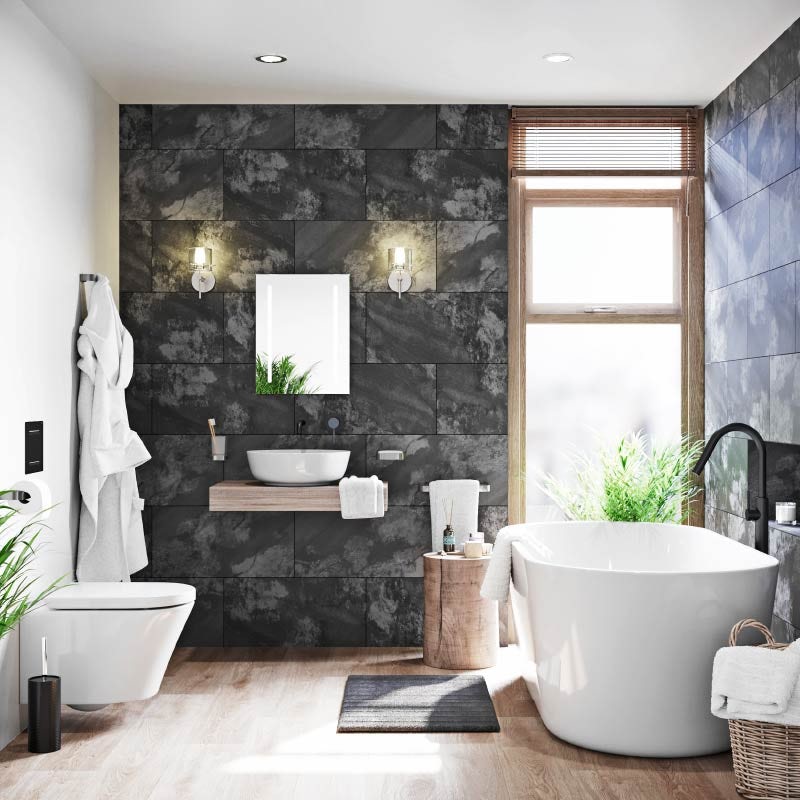Toilet or bath mats are great for keeping your feet warm and the floor free from water. But the question remains: Are they unhygienic? We take a deep dive into this matter.
Not sure about you but I am a sucker for cute things! I can't resist anything adorable, and that includes bath mats. Not only do bath mats add a touch of personality to your bathroom, but they also keep your feet warm, cosy and away from the cold, damp floor. Plus, they save you the hassle of using your towel to dry off your feet.
However, as innocent as these bathroom mats may appear, you must always exercise caution. Just think about all the dirt and bacteria that accumulate on them, not to mention their condition after weeks of use. Are bath mats still a sanitary option for bathrooms?
Hygiene with bath mats
Bathrooms are often associated with unhygienic activities, so it's no surprise that bathroom mats may not exactly be considered the height of cleanliness. But it's not all bad news! The main culprit here is the infrequent cleaning and constant dampness, which creates the perfect breeding ground for bacteria. Despite this, it's worth noting that some materials, such as rubber-backed or antimicrobial fabric rugs, require less cleaning due to their inherent antibacterial properties.
The purpose of bath mats
While there may be several reasons for their existence, the primary purpose of a bath mat is to provide a dry spot for you to step on after a bath or shower. They also help prevent slips and falls, absorb excess water splashes and protect the top layer of your bathroom flooring.
Many of us simply have bath mats in our bathrooms because it's something we grew up with. After years of having a bath mat in our childhood bathroom, it becomes a habit we continue in own homes. Additionally, bath mats are a fantastic way to inject a pop of colour and style into your bathroom decor.
Do I need one?
The decision whether to have a bath mat or not ultimately rests in your hands. There's no right or wrong answer here. Some see bath mats as a safety precaution against slips, while others view them as decorative items.
If you're still undecided, consider the aftercare involved in owning a bath mat. Like towels and other fabrics, bath mats require occasional cleaning. But don't let the thought of washing them discourage you from getting one. Bath mats offer more than just foot-drying functionality. They can help protect your floors from water damage, making them particularly beneficial for homeowners with vulnerable flooring. Moreover, families with kids appreciate bath mats for ensuring a safe bathroom environment. If fabric bathroom rugs aren't your cup of tea, there are alternative options like wooden mats or bamboo mats (like the one below) to explore.
How dirty are bath mats?
Bath mats can quickly accumulate dirt and moisture due to their water-absorbent nature. If they aren't given ample time to air out, they can become a cosy little habitat for mould, germs and bacteria. Even disregarding hygiene concerns, a mouldy bath mat is far from pleasant.
Similar to any other bathroom item, keeping bath mats clean and sanitary is crucial. Regularly cleaning with hot water and replacing them when necessary is essential. While it may seem tedious, it's far better than letting your bath mat develop an unpleasant odour and allowing it to become a breeding ground for mould. Over time, changing your bath mats will become a habit.
Bacteria on bath mats
Since they spend a considerable amount of time in the bathroom, bath mats are exposed to moist environments, making them an ideal breeding ground for bacteria and mould. Given their frequent use, it's only natural for these unwelcome guests to make themselves at home. To prevent bath mats from turning into bacterial sanctuaries, it's advisable to change them frequently, especially if they have carpet-like material.
Issues with mould
Mould may not always be visible to the naked eye, but you'll notice random stains or a musty smell emanating from the mats. Those who have encountered mouldy mats describe the smell as similar to rotting wood or wet socks. Prolonged exposure to mould can lead to illness, especially for individuals with asthma, mould allergies or respiratory conditions. Prevention is the best cure, so establish a routine for changing your bath mats before the stench becomes unbearable and anyone falls ill.
Read more about preventing mould in your bathroom.
The smell from bath mats
Now, you may wonder, how do bath mats end up with such unpleasant odours? The stench often originates from mildew or various forms of mould. Aside from the smell, it's not safe to share the same space as a mouldy mat. If you notice an unusual smell that doesn't resemble mould, and you have a pet, you may want to investigate whether they have chosen your bathroom to do their business!
Find out more about creating a pet-friendly bathrooms.
Prevent mould build-up in your bathroom
To prevent mould build-up in your bathroom, we'd recommend washing your mats weekly. The easiest way to keep them clean and bacteria-free is to toss them in the washing machine and then allow them to air dry afterwards. You can drape them over a hanger or the bathtub after a shower, shake them dry or use a dryer.
Find out how often you should wash your bath mat.
Conclusion
There are numerous benefits to having a bath mat in your home. However, maintaining cleanliness is crucial. It always pays to prioritise proper hygiene to prevent any potential health issues.
Shop bath mats
Whether you're accessorising a new bathroom or simply replacing like-for-like, you'll find a fabulous selection of stylish bath mats here at Victoria Plum. Simply click below to begin browsing.















